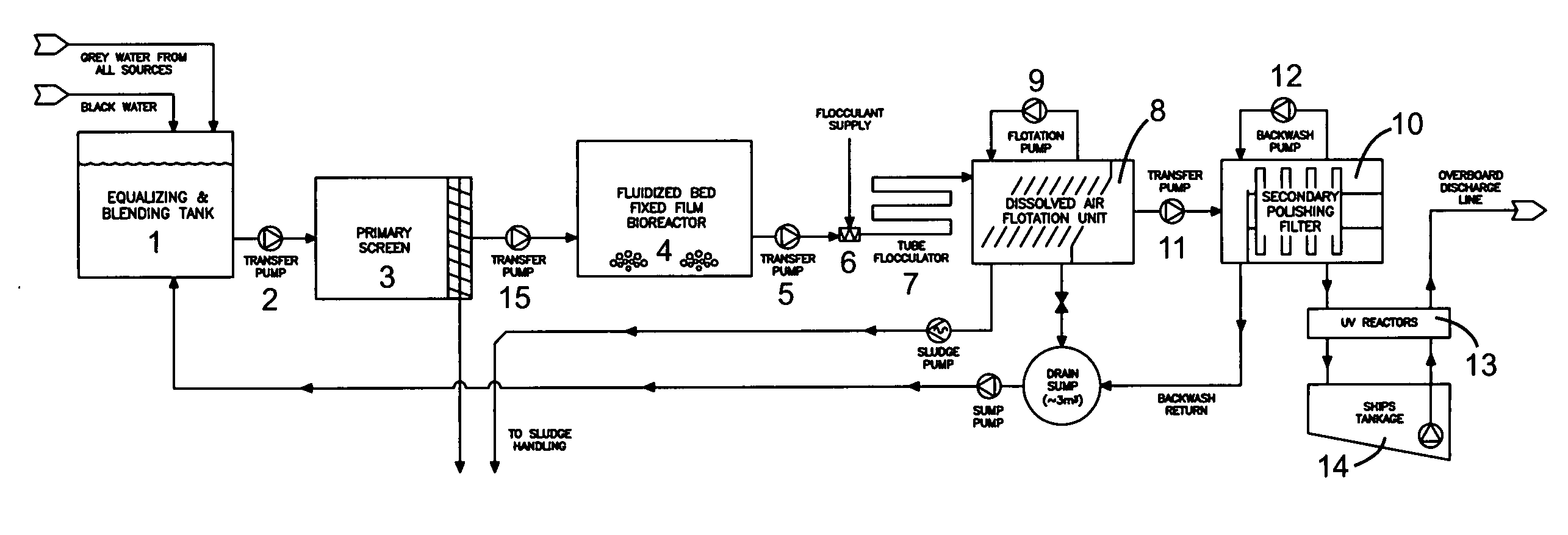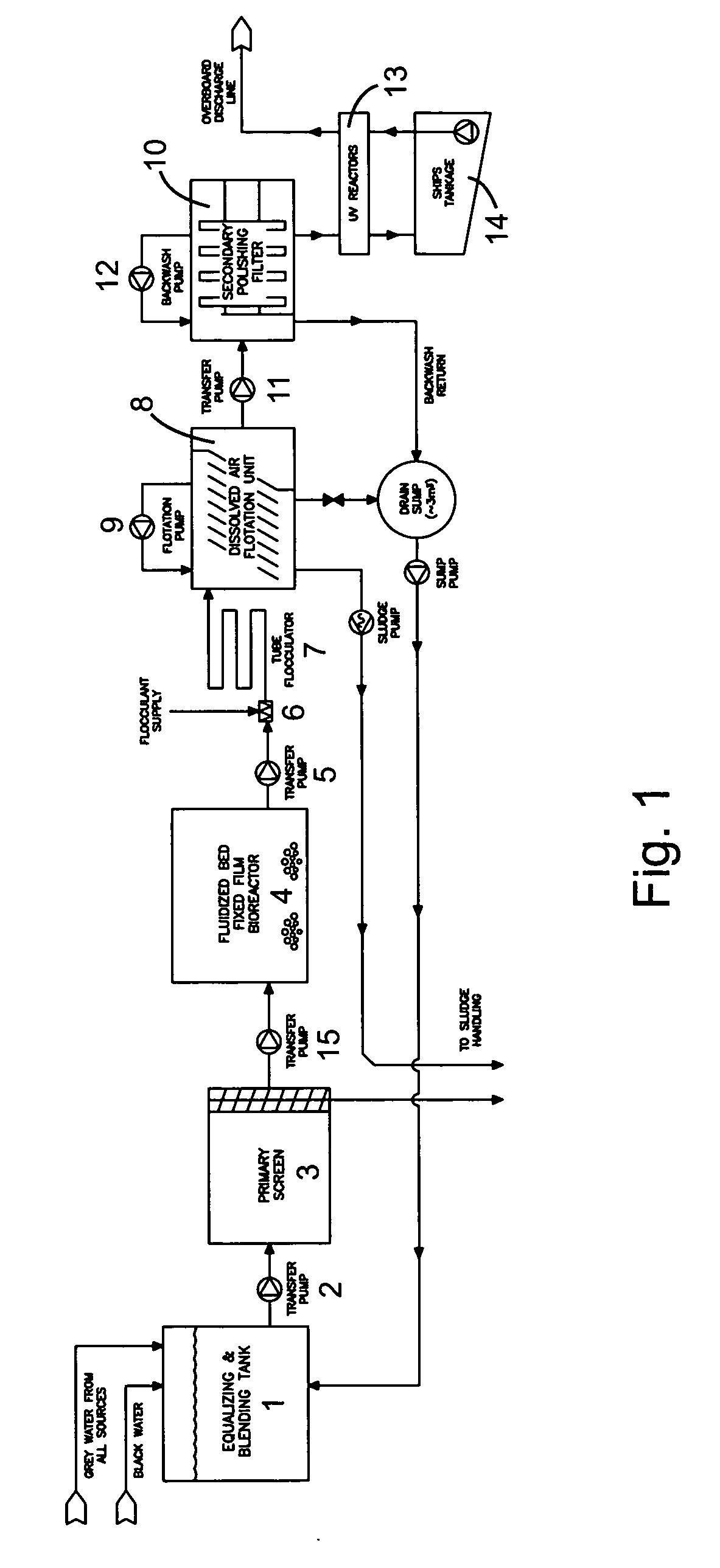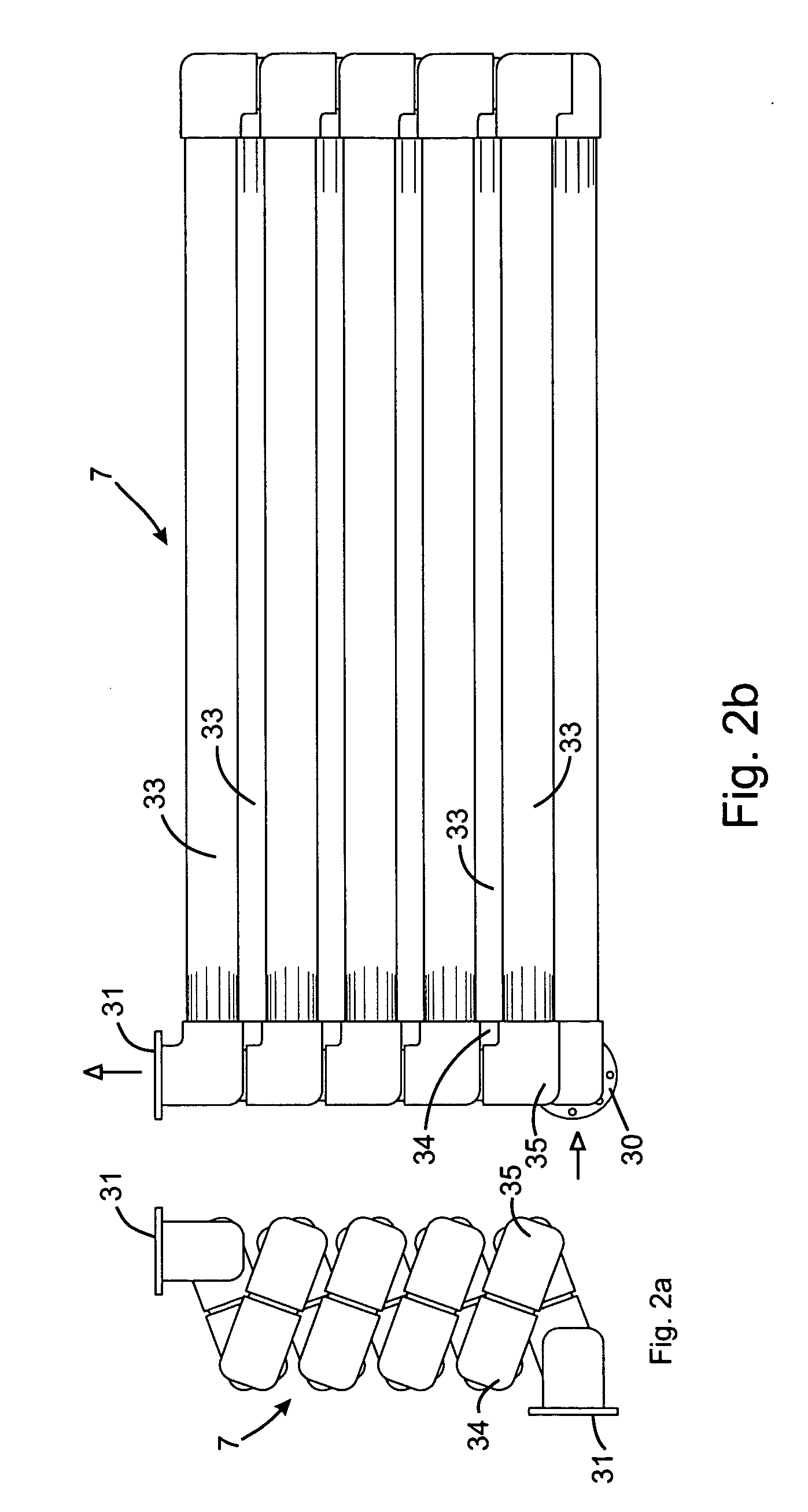Wastewater treatment system for a marine vessel
a technology for wastewater treatment and marine vessels, applied in water/sludge/sewage treatment, flotation, solid sorbent liquid separation, etc., can solve the problems of affecting the practical implementation of conventional overflow daf tanks on marine vessels, and affecting the efficiency of wastewater treatment. , to achieve the effect of reducing the erratic movement of wastewater
- Summary
- Abstract
- Description
- Claims
- Application Information
AI Technical Summary
Benefits of technology
Problems solved by technology
Method used
Image
Examples
Embodiment Construction
[0023] Referring to FIG. 1, greywater and blackwater from the marine vessel is first provided to an equalization and blending tank 1. A first transfer pump 2 is then used to direct the combined wastewater at a relatively constant flow rate through a primary screen 3 for performing solids separation. The separated solids are sent along with the sludge either to a handling and storage facility or to on-board incineration with optional de-watering and drying prior to combustion. A second transfer pump 15 is then used to provide sufficient pressure to the wastewater as it is transferred for aerobic biological treatment within a fluidized bed fixed film bioreactor 4.
[0024] The bioreactor 4 contains a plurality of neutrally buoyant inert structures for supporting the fixed film during fluidization. The neutrally bouyant inert support structures may comprise any suitable structure for supporting an attached biological film while being amenable to fluidization. For example, the structures ...
PUM
| Property | Measurement | Unit |
|---|---|---|
| residence time | aaaaa | aaaaa |
| pressure | aaaaa | aaaaa |
| buoyancy | aaaaa | aaaaa |
Abstract
Description
Claims
Application Information
 Login to View More
Login to View More - R&D
- Intellectual Property
- Life Sciences
- Materials
- Tech Scout
- Unparalleled Data Quality
- Higher Quality Content
- 60% Fewer Hallucinations
Browse by: Latest US Patents, China's latest patents, Technical Efficacy Thesaurus, Application Domain, Technology Topic, Popular Technical Reports.
© 2025 PatSnap. All rights reserved.Legal|Privacy policy|Modern Slavery Act Transparency Statement|Sitemap|About US| Contact US: help@patsnap.com



